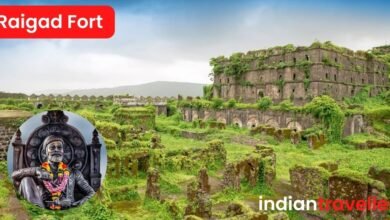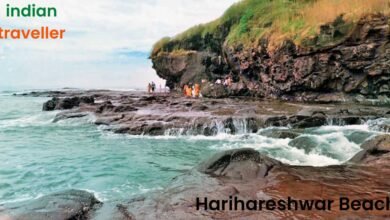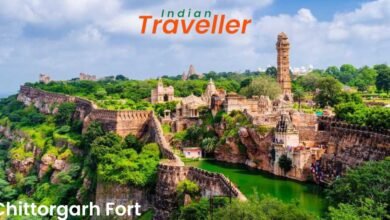Places To Visit in Aurangabad Chhatrapati Sambhaji Nagar
Places To Visit in Chhatrapati Sambhaji Nagar
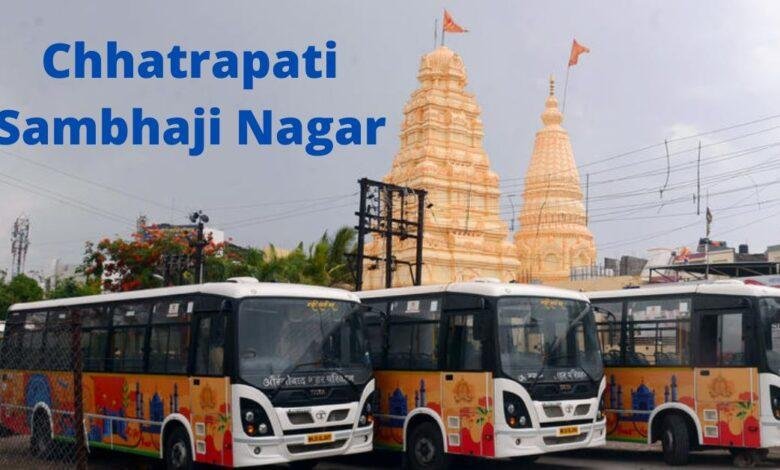
Introduction
Welcome to Chhatrapati Sambhaji Nagar, a city of gates also known by name as Aurangabad! Nestled in the heart of Maharashtra, this vibrant destination offers a unique blend of heritage sites, natural beauty of historical places. From majestic forts, Hills, Museums, Zoo’s, Caves, Temples and many more… and serene parks to bustling markets and exquisite cuisine, Chhatrapati Sambhaji Nagar has something for every traveler. Join us as we uncover the must-visit places that showcase the essence of this remarkable city!
1.CHATRAPATI SHIVAJI MAHARAJ MUSEUM

At a distance of 5.5 km from Ch. Sambhajinagar Railway Station, Chhatrapati Shivaji Museum is located near Nehru Bal Udyan. This is one of the best tourist attractions in Ch. Sambhajinagar.
The museum is dedicated to Chhatrapati Shivaji Maharaj, the great Maratha ruler. Founded by the Municipal Corporation of Ch. Sambhajinagar city, the cost of the museum is around 194 lakhs. The building has a total of 6 exhibition halls. A visit to this museum takes visitors back into the days of Maratha valor and their love for their homeland.
The exhibits on display tell stories of the glorious reign of the brave king, showcased in six galleries. The display comprises Maratha war weapons and other artifacts from the battlefield of some of the most popular wars that the Marathas fought. The main exhibits here include the 500 year old war suit, a copy of the Aurangzeb’s handwritten Quran, and a 400 year old Paithani sari.
The first hall is decorated with the wooden craft which reminds us the glorious past. The second hall is full of sword shields and ancient rifles. In the next hall photographs and transparencies of forts like Torana, Lohagad, Panhalgad, Sinhagad are displayed. One can see the advanced architectural beauty of the forts. The fourth hall consists of vessels used by the people contemporary to the great King Shivaji Maharaj. There is a separate space provided for the exhibition of coins. These coins are rare. The coins were used by Satavahana Dynasty. Looking at the display, visitors can also get a detailed idea of the lifestyles of the people of Shivaji Maharaja’s era.
The entry fee of the Museum varies. For Indians, it’s INR 60. For foreigners, it’s INR 300. Entry fee for children is INR 10 whereas the entry fee for students is INR 25.
Timings: 10.30 AM – 6 PM on all days.
2.SIDDHARTH GARDEN
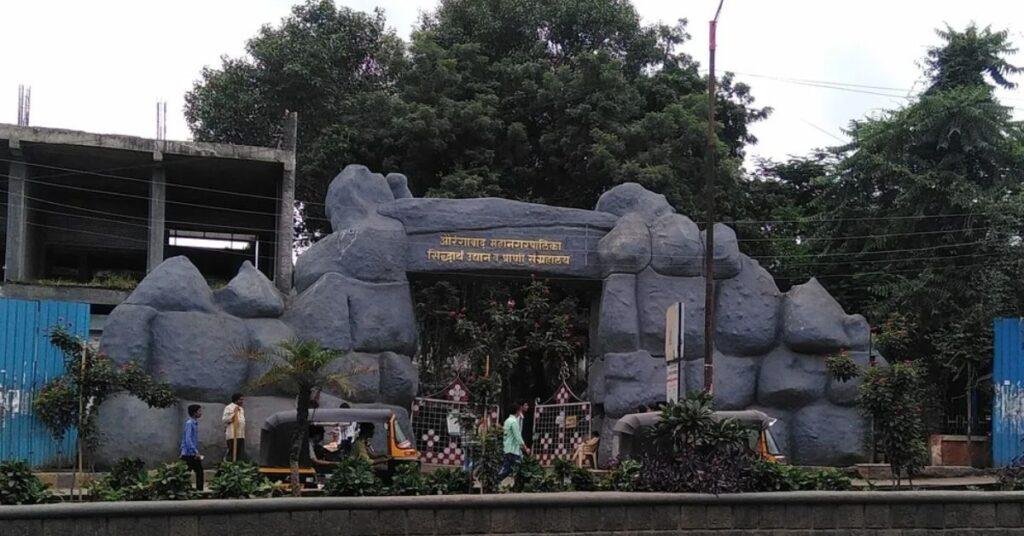
The lively Siddharth Garden is well-designed and maintained, with vibrant flowers, majestic trees, and colourful lawns. The zoo, which houses a variety of wild animals such as tigers, lions, leopards, civet cats, snakes, crocodiles, emus, foxes, deer, and hyenas, is another highlight of the garden. In Siddharth Garden, there is also an aquarium where visitors can see a variety of colourful fish. It’s a fun place for kids to hang out. The singing fountain and the Buddha statue are two other lovely features in the park.
At a distance of 3 km from Ch. Sambhajinagar Railway Station and 4 km from Bibi Ka Maqbara, Siddharth Garden is a sprawling garden, park and zoo together situated at Samarth Nagar city. This is one of the popular picnic and is mostly crowded on evenings especially on weekends.
Entry Fee:
Siddharth Garden: Adult INR 20
Children INR 10
Zoo Entry Fees: Adult INR 50
Children INR 20
Timings: 09:00 AM TO 05:00 PM
3.BIBI KA MAQBARA

A symbol of remembrance, Bibi Ka Maqbara is almost indistinguishable from another memento of love and its inspiration, the Taj Mahal. It might be a derivative of the Taj but the mausoleum stands proud as an expression of a son’s love for his mother and has its own wandering evocations. Also called the Tomb of the Lady, Bibi Ka Maqbara was designed by Ataullah, the son of Ahmad Lahauri, the architect of the Taj Mahal which explains its appearance heavily based on the prime marvel. Related to each other in ways more than one yet separated by time, magnitude and miles both the mausoleums are exemplary depictions of love, memory and loss. While the first memorial, Taj Mahal belongs to Aurangzeb’s mother, the second, Bibi Ka Maqbara is dedicated to his wife – both the tombs immortalising these women in the chapters of history and alluding to the despotic yet the last influential Mughal emperor.
Bibi Ka Maqbara Facts
Rabia-ud-Durani, the title conferred to Dilras Banu Begum was attributed to an Iranian noble lady, Rabia Basra known for her benevolence. The marble for the construction of the mausoleum was sourced from the marble mines in Jaipur. Its cost of construction is estimated to be around Rs 6-7 lakh. It is believed that the marbles for the construction of the structure were carried in ox-pulled carts.
Bibi Ka Maqbara Opening Days: Bibi Ka Maqbara is open on all days of the week between 8 in the morning till 8 in the evening which are the visiting hours for the tomb.
How to get in from city: Central Bus Stand is the nearest bus stand near Bibi Ka Maqbara and the distance between the two is 3.4 km.
Timings: 8 am to 8 pm.
Entry fees: Rs 25 for Indian citizens and Rs 300 for foreign tourists
4.PANCHAKKI (WATER MILL)

Located close to Bibi ka Maqbara in Ch. Sambhajinagar, Panchakki is a water mill complex consisting of a court, a madrasa, the house of a minister, a mosque, houses dedicated to females and a sarai. The mill derives it names from the grinding mill used to grind grains for the pilgrims. Surrounded in hues of blue and shades of green, Panchakki is a perfect picnic spot and a much-frequented attraction in Ch. Sambhajinagar.
An underground water stream 6 km away from Panchakki, which is a tributary of Harsul River is a source of steady water supply to this structure and is transported through earthen pipes. One can only imagine the pure genius and farsightedness of the construction plan of this marvel. What is noteworthy is that even though the purpose of the building Panchakki was sheer utility, the beauty of it is not compromised in the least. The calm silver waters of the reservoir act like the sky’s mirror and the gentle rhythmic ripples hypnotise the onlooker. There is a huge banyan tree, almost 300 years old, which stands tall by Panchakki, only to add to its brimming magnificence.
Timings: 6:30 AM – 9:30 PM
Entry Fee: Indians: INR 5,
Foreigners: INR 100
Also Read This 👉 20 Delicious Indian Dishes You Can’t Miss
6.CH. SAMBHAJINAGAR CITY CAVES
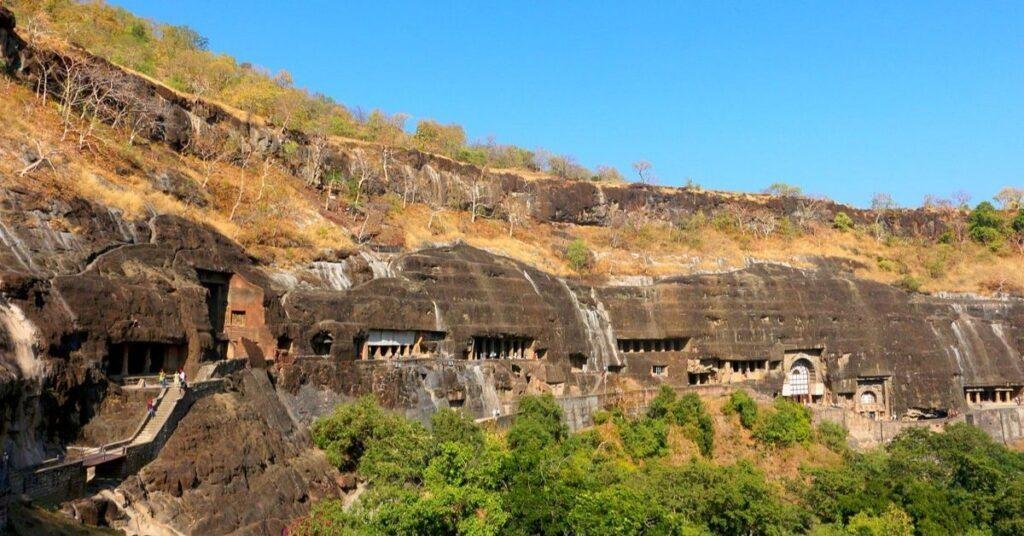
The Ch. Sambhajinagar city caves are tucked between the Satara and Sihyachal range of hills in Ch. Sambhajinagar. Located just 2 km from the famous ‘Bibi Ka Maqbara’, the Ch. Sambhajinagar Caves are a standing testament to India’s glorious past. Constructed around the 2nd or 3rd century like its many counterparts, the caves are a cluster of three sets of Buddhist caverns separated by a distance of 500 meters from each other.
Attractions: Bibi Ka Maqbara view, Buddhist stupas, rock formations, Caves 1, 2 and 3.
Best Time To Visit: All through the year
Timings: 9:00 am to 5:00 pm; every day
Entry Fee: ₹ 10 for Indians; ₹ 100 for foreigners
Photography and Videography: Allowed
7.SUNHERI MAHAL

At a distance of 2 km from Bibi Ka Maqbara and 6 km from Ch. Sambhajinagar Railway Station, Sunheri Mahal is a palace located at the foothill of the Ch. Sambhajinagar Caves in the Paharsingpura area of Ch. Sambhajinagar city. It is one of the top places to visit in Ch. Sambhajinagar.
Soneri Mahal was built by a Bandalkand chief who accompanied Aurangzeb into the Dakhan. The Mahal was built between 1651 AD and 1653 AD at a cost of Rs.50, 000 and in 1934 AD it was sold to the Nizam of Hyderabad for Rs.26, 400. The Mahal is named after the paintings in the palace that were once painted in gold.
It is a grand two stored building constructed in typical Rajput style. The palace is made up of lime and stone. Sprawling over two storeys, the palace stands as a testimony of Indian architectural splendor with some intricate decorations all over. A well-manicured garden adds to its beauty. The entrance of the Palace is decorated with beautifully done arches.
This ancient historic monument is now transformed into a museum. It was set up in 1979 and exhibits the remnants of regional palaces, antique items, coins, ancient Indian Pottery, paintings and many more alluring items. The museum also displays some major reliefs and sculptures found in the local excavations. This museum is placed in the campus of Dr. Babasaheb Ambedkar Marathwada University.
The palace is the venue for the Ch. Sambhajinagar Festival, where musicians and dancers perform their art. During the festival, the regional artisans also put up many stalls to sell their artifacts. The Ch. Sambhajinagar festival is clubbed with Ellora festival and celebrated in the month of December.
Entry Fee: Rs. 10 for Indian and Rs. 100 for Foreigner.
Timings: 9 AM to 5 PM on all days except Mondays.
8.GOGA BABA HILL

The Goga Baba Hill is a small hillside location and is famous for its serene and tranquil environment. The tourists can spend wonderful time gazing at nature. The sunset from the top of the hill is really a lovely sight. On the footsteps of the Goga Hill, there is a small temple. A way behind this temple leads to the top of the Goga Hill. The tourists have to trek to reach the peak of the hill. It takes a time span of half an hour to reach there. Once you have reached the top of the hill, you will find a small white coloured Temple. This temple is quite small with a space to accommodate only two persons at a time. There are no historical records about the significance of the temple, however tourists visit this place. From the hill top, you can have a panoramic view of the complete city of Ch. Sambhajinagar. You will get fine views of the Devgiri Fort, The Hanuman Tekadi, Bibi Ka Maqbara and Ch. Sambhajinagar city caves. The Caves are quite close to the Goga Baba hill. From the hill, you can trudge to the caves and explore them. The tourists can capture wonderful shots from the hilltop and enjoy the calm environment.
Tip: Morning time is best time to trek the hill.
9.DAULATABAD FORT

The fort city, Daulatabad, in Maharashtra is located at a distance of 16 km northwest of Ch. Sambhajinagar. Daulatabad was earlier called Devgiri.
Daulatabad province is situated 13 kilometres away from Ch. Sambhajinagar. Literally meaning the city of fortune, Daulatabad is home to the resplendent 12th century fortress perched on the lush hillock. This impregnable fort complex features a 5 kilometre fortified wall and massive ramparts.
We have earlier featured Daulatabad Fort as one of the best forts in India.
In 1327, the city was the capital of Muhammad bin Tughlaq (r. 1325-1351), Tughlaq dynasty. He forcibly shifted the population of Delhi to Daulatabad and also altered the name. But, after two years, the city was abandoned due to scarcity of water.
- Timings: 9:00 am to 6:00 pm; every day
- Entry Fee: Indians – INR 5; Foreigners – $2 or INR 100.
10.H2O WATER PARK

Situated on the National Highway Daulatabad – Ellora Road in Ch. Sambhajinagar city, H2O Water Park is a power-packed amusement water park in the city. With a plethora of slides and rides designed for both adults and kids, the park also has separate swimming pools depending on the height of the guests. You can also tap your feet to amazing Bollywood music played by some of the best DJs in the area. It also has several food stalls and counters serving delicious snacks and beverages.
The city’s H2O Water Park is a high-octane fun water park. The park offers separate swimming pools for adults and children, as well as a variety of slides and rides for both adults and children. You may also tap your toes to some of the top DJs in the neighbourhood spinning wonderful Bollywood music. It also features a number of food kiosks and counters where you can get excellent snacks and drinks.
There are many amazing rides and some of them are:
•Tube rides, 40-foot drop slides, and cyclone coasters are among the park’s numerous exhilarating thrills for both children and adults.
•Children’s frog and crocodile slides
•There are two rain dance floors, one of which is dedicated to families.
•The culinary corner, which serves delectable dishes as well as drinks and cocktails
Tips: The rain dance floor is amazing you should take part in the activity and you can have the food inside, or you can try some of the restaurant outside the park.
Open Time: 10am – 6pm
Entry:
Child Ht. below 4′00″ – Weekdays, Weekends & Holidays: INR 450
Adult Ht. above 4′00″ – Weekdays: INR 550, Weekends & Holidays: INR 650
11.MHAISMAL
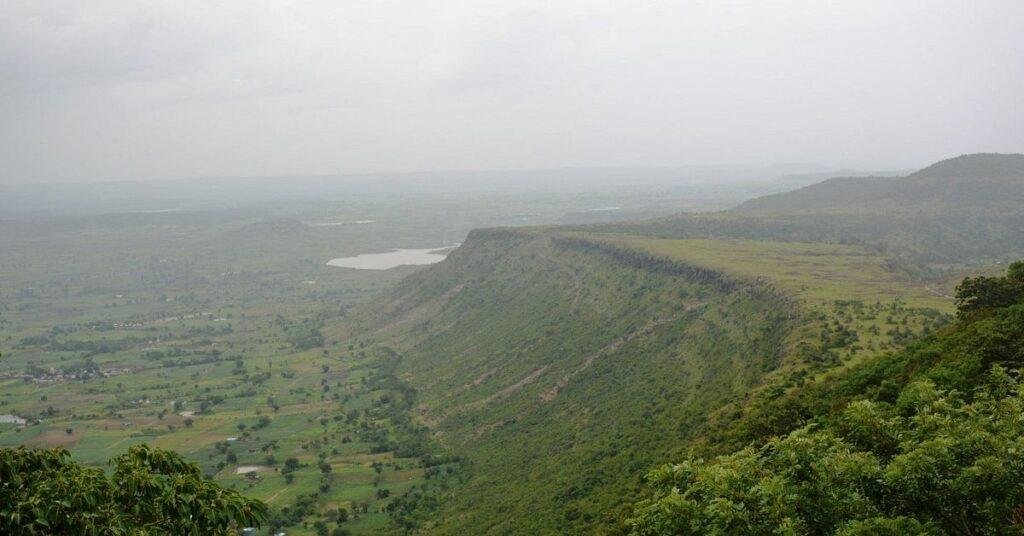
Tucked midst of charming Sahaydri Ranges and fixed in the district of Ch. Sambhajinagar, the alluring hill station of Mhaismal is perched on the elevated height of 1067 meters above sea level and offers you with absolute nirvana delight besides earning the title of popular hill station near Mumbai. Enshrouded with sheer grandiosity, Mhaismal was formerly coined as Maheshmal, thanks to the queer village of the same name within the vicinity of the hill station.
Most frequented during the monsoons, Mhaismal’s unfathomable beauty sprawls over the undulating terrains and rich verdure. An amalgamation of paradisiacal dominion, pristine ambience and the bamboo-brown forests helps concoct Mhaismal as one of the famous hill stations in Maharashtra.
Apart from the natural beauty of the hill station, there are several attractions one must visit to complete their trip to Mhaismal.
1. Ranjangaon Ganpati temple which is one of the Ashtavinayaka and is reputed for maintaining cleanliness.
2. Bhadra Maruti is a pilgrim hotspot because of the Lord Hanuman’s sleeping idol.
3. Old Jain Temple is a must-visit for its amazing display of art.
4. The historical Fort of Devagiri is another significant attraction.
5. The Mughal style garden of Bani Begum Bagh is known for its rejuvenating beauty.
6. Pitalkhora Fort, nestled in the green valleys has a beautiful setting and some mystic caves and sculptures as well.
Also Read This 👉 Which place is best to visit in Diwali in India?
12.BHADRA MARUTI
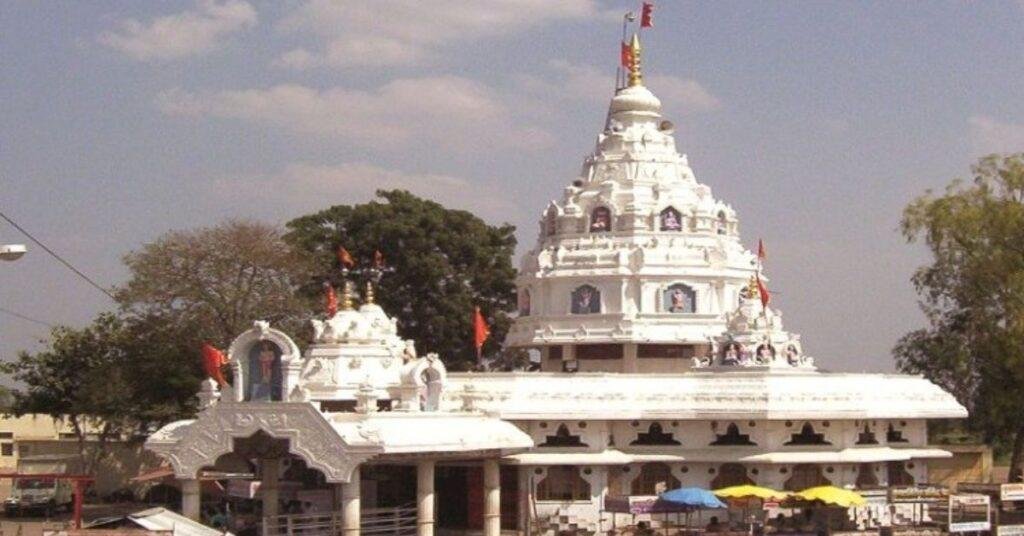
Large crowds visit the temple on the eve of Hanuman Jayanti and Ram Navmi to participate in the special prayers organized at the time. This temple is a well-known pilgrimage centre thus it magnetizes large flocks of devotees. It is one of the three temples in India where you’ll find a reclining statue of Hanuman. The temple is 2 km away from the tomb of Aurangzeb and 22 km away from main Ch. Sambhajinagar city. Devgiri Fort also comes on the way to the temple. One can find splendid samples of traditional art at the innermost portions of the temple. The inner portion of Bhadra Maruti is covered with precious marble stone and an idol of deity Hanuman is placed in the middle of the complex. The canopy is divinely designed. Hymns and prayers are inscribed on the walls of the temple. The statue of Lord Hanuman is screened with orange cloth and a garland of banyan leaves. Kandi Pedas is a delicious sweet sold around the temple. Regular transport services are available from Ch. Sambhajinagar city to Bhadra Maruti Temple.
13.TOMB OF MUGHAL EMPEROR AURANGZEB

Located in Khuldabad, about 24 kilometers from Ch. Sambhajinagar city, the tomb of Aurangzeb is a simple yet significant historical site. Ruling the Indian kingdom for about half a century till he died in 1707 AD, Aurangzeb was the last Mughal emperor. History has it that it was his last wish that he be laid to rest near the dargah of Sheikh Zainuddin, his spiritual guru. He is known to have bought this place by selling caps he knitted and by copying the Quran during his last years.
Unlike the tombs of most Mughal emperors, this one does not have the characteristic large mausoleums that are normally associated with these tombs. Instead he was interred in an open air grave as per his wishes and in accordance with Islamic principles. The tomb itself lies on an elevated red stone platform amidst the marble floor. Remarkably plain, the perforated marble screens on three sides are the only elements of decoration.
The tomb is located in the city of Khuldabad, in the district of Ch. Sambhajinagar, 24 kilometres (15 mi) from Ch. Sambhajinagar. It is located in the south-eastern corner of the complex of the dargah of Sheikh Zainuddin
14.ELLORA CAVES

Ellora Caves are an impressive complex of rock shrines that represent the three faiths of Buddhism, Hinduism and Jainism and were created between the 5th and the 13th centuries CE. The caves are 30 km north-west of central Ch. Sambhajinagar, a few kilometres from Khuldabad, and 330 km (210 mi) north-east of Mumbai in Maharashtra state.
How to get in:
- There are numerous bus services running to Ellora from Ch. Sambhajinagar Central Bus Station, but the Maharashtra State Tourism Corporation (MTDC) Bus Service is most reliable. There is a luxury bus tour departing daily at 8AM from the MTDC office on Railway Station Road. In addition to Ellora, the tour also includes several famous sites in Ch. Sambhajinagar.
- Taxis of all types are available from Ch. Sambhajinagar. Daulatabad Fort is on the way to Ellora.
Ellora Caves. 9:00AM to 5:30PM closed on Tuesday, Open on ALL National Holidays.
The entry fees ₹30 for Indians, ₹500 for Foreigners. Free entry for children below 15 years. Still Photography: Free, Video Photography: ₹25
15.GRISHNESHWAR JYOTIRLINGA TEMPLE

Grishneshwar Temple is located in the Ch. Sambhajinagar district of Maharashtra. It belongs to the celebrated list of 12 Jyotirlinga temples of Lord Shiva. This temple is nearly 3000 years old and the Linga faces east. The sanctum sanctorum includes Lord Grishneshwar and his consort Grishneshwari.
During the month of Shravan, the temple remains open between 03:00 am to 11:00 pm. The time required for Darshan: 1 to 2 hours depending on the crowd.
Darshan Timings: 5.30am to 9.30pm
Best Time to Visit: June to August
Here’s how to reach Grishneshwar Temple:
- Air: The nearest airport is in Ch. Sambhajinagar, and there are regular flights from Delhi, Mumbai, Jaipur, and Udaipur.
- Train: Ch. Sambhajinagar is the nearest railway station. Manmad is also closer and better connected.
- Road: From Pune: 256 km/4.5 hours. From Nasik: 187 km/3 hours. From Shirdi: 122 km/2.5 hours.
16.AJANTA ELLORA CAVES

Ajanta Ellora Caves have always been recognized as the gems that represent Indian history and the impressive artistry that existed in the foregone era. These tourist attractions consist of 64 rock-cut caves, located in close proximity from the city of Ch. Sambhajinagar.
Today, Ajanta and Ellora Caves are a UNESCO World Heritage Site and exist in the wishlist of many travellers. Since we didn’t want your research to be exhausting, we decided to jot down all you need to know before you plan a trip to Ajanta Ellora Caves.
This is your complete Ajanta Ellora Caves Tour Guide that covers history, the best time to visit, timings and fee, how to reach, map, main attractions of the caves, things to do, and places to stay.
June to March is the best time to visit Ajanta Ellora Caves due to pleasant weather. From June to September (monsoon) the region receives average to plenty of rain showers, which make the exploration experience a delight. While during months of November to February the temperature drops moderately. Summer months (March to May) can actually get hot especially in the daytime. So, try to avoid this season if you’re planning a visit to Ajanta and Ellora caves.
From Ch. Sambhajinagar city centre, the Ajanta Caves are about 102 kilometres away on the Ch. Sambhajinagar – Ajanta – Jalgaon road. Hiring a local taxi is the most preferred way of making a day trip to Ajanta. But if you are driving down, you should be apprised of the fact that the highway linking Ch. Sambhajinagar to Mumbai is connected to other major cities in the country such as Delhi, Jaipur, Udaipur, Bijapur, and Indore.
Timings: 9 am to 9:30 pm (Mondays closed)
Entry Fee: INR 40 per head (Indians) | INR 600 per head (foreign tourists) | INR 25 per camera | INR 0 for children below 15 years old.
17.JAYAKWADI DAM

Jayakwadi dam is an earthen dam located on Godavari River at the site of Jayakwadi village in Paithan taluka of Ch. Sambhajinagar district in Maharashtra, India. It is a multipurpose project. The water is mainly used to irrigate agricultural land in the drought-prone Marathwada region of the state. It also provides water for drinking and industrial usage to nearby towns and villages and to the municipalities and industrial areas of Ch. Sambhajinagar and Jalna districts. The surrounding area of the dam has a garden and a bird sanctuary.
At a distance of 47 km from Ch. Sambhajinagar, Jayakwadi Dam or Paithan Dam is constructed over the sacred river Godavari and is the major source of water supply to the Ch. Sambhajinagar city. Nath Sagar Jalashay is the name of the reservoir formed by Jayakwadi Dam. Fed by the Godavari and Pravara rivers the reservoir is about 55 km long and 27 km wide and spans over 350 Sq. km. Total submergence area due to the reservoir is approximately 36,000 hectares. Unfortunately siltation has taken a heavy toll on the project. It is estimated that approximately 30% of the dam is filled with silt, reducing its life as well as storage capacity. Dnyaneshwar Udyan is one of the largest gardens in Maharashtra resembling the Brindavan Gardens of Mysore. It is spread over 125 hectares and is situated on the banks of Nath Sagar Lake formed due to Jayakwadi Dam. Jayakwadi Bird Sanctuary, sprawls across the backwaters of Nath Sagar reservoir, houses variety of flora and fauna. A wide range of resident and more than 70 species of migratory birds can found in the vicinity. Some of them include Siberian migratory birds, Flamingos, Porchards, Cranes etc. The ideal time to visit the place is from October and March.
Dnyaneshwar Udyan Timings: 5.30 AM to 11 PM
Dnyaneshwar Udyan Entry Fee: Rs. 10 per Person.
